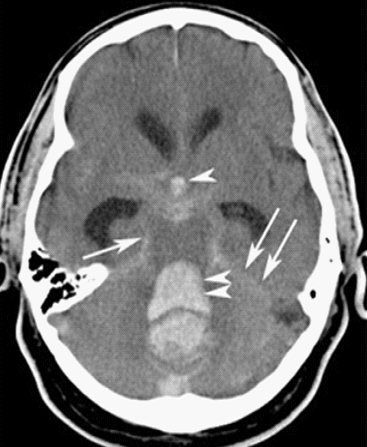Stroke CT scan
|
Stroke Main page | |
|
Diagnosis | |
|---|---|
|
Treatment | |
|
Case Studies | |
|
Stroke CT scan On the Web | |
|
American Roentgen Ray Society Images of Stroke CT scan | |
Editor-In-Chief: C. Michael Gibson, M.S., M.D. [1]; Associate Editor(s)-in-Chief: Maryam Hadipour, M.D.[2]
Overview
Non-contrast CT scan is the first imaging for stroke evaluation. It manifests the site and the type of stroke (ischemic or [hemorrhagic]]) and excludes mass or other conditions which mimic stroke.
CT scan
Currently, non-contrast computed tomography (CT) remains the primary imaging modality for the initial evaluation of patients with suspected stroke. A non-contrast head CT may identify the early signs of stroke, but more importantly will exclude intracerebral hemorrhage and lesions that might mimic acute ischemic stroke such as tumor or intracerebral hemorrhage. Non-contrast CT is also used in the evaluation of acute intracranial hemorrhage as it produces good contrast between the high attenuating (“bright”) clot and the low attenuating (“dark”) cerebrospinal fluid (CSF).[1]


